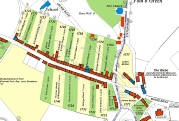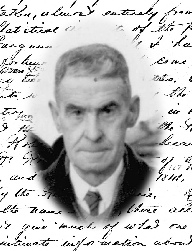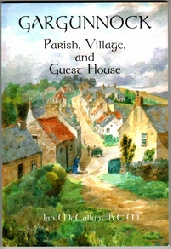



THE PARISH OF GARGUNNOCK’S EVOLUTION
12000 years ago ice, more than a kilometre thick, covered the area and the weight of it depressed the land below sea level. As it melted and retreated the sea came in and covered the valley (whale bones have been found near the village) Relieved of its over-
Then along came new ideas in land management designed to improve profitability. Peat removal, better drainage and improved agricultural methods, tools and eventually machinery all contributed to the creation of surpluses. These improvements also tended to favour the formation of larger farms at the expense of small ones which displaced many people from the land into small settlements. In the early 1700s, to accommodate this the Laird of Gargunnock, Sir James Campbell, made available strips of land (feus) on either side of what is now the Main Street (or King’s Highway”) Many of these people were tradesmen or day labourers servicing the bigger farms.
the Laird of Gargunnock, Sir James Campbell, made available strips of land (feus) on either side of what is now the Main Street (or King’s Highway”) Many of these people were tradesmen or day labourers servicing the bigger farms.
So the village grew from perhaps just a cluster of houses adjacent to the Gargunnock Burn, until it contained about 90 houses at the end of the century as original feus became sub-
Thereafter the laying of public sewers in the 1950s, the redevelopment of part of the Main Street by the local authority, the renovation of older properties with the help of generous improvement grants in the 1960s and an increase in new-
Gargunnock Book
Apart from references to the village in various Gazetteers throughout the years there has been only one book on the village ever published, and an excellent one it is too. Its author, Ian McCallum BEM, came here to live for a few years in Trelawney Cottage in the Square (formerly The Guest House), around the millennium. An ex-
It is to Ian that we now appreciate the history of the development of the village and the immediately surrounding area i.e. the Parish of Gargunnock, encompassing mainly the estates of Gargunnock, Leckie & Boquhan. Before 2000 we were largely ignorant of the fact that the village had been manufactured over a relatively short period of 65 years during the 18th century.
Copies of the Gargunnock book are still available from Amazon meantime.

Duncan McNeil’s Talk on Gargunnock Parish thro’ the Ages
The chap on the left is Duncan McNeil who spent all of his life working for Gargunnock Estate as did his father, Dugald, before him.
In 1947 Duncan gave a talk in the then newly created church hall in Station Road about Gargunnock Parish. His talk was based on the two available Statistical Accounts for Gargunnock Parish (the third wasn’t published till 1960) supplemented by his own unique view of the current community and some of the characters in it.
I found his hand-
It is well worth a read in advance of a study of the three full Statistical Accounts contained elsewhere on this site.
Just click on the photo to view or download it for reading offline.

| History Bytes |
| Statistical Accounts |
| Church History |
| Local Magazines |
| Chronology |
| Parish Magazines |
| Kirkyard Monumental Inscriptions |
| Lower Graveyard Monumental Inscriptions |
| Where are they now? |